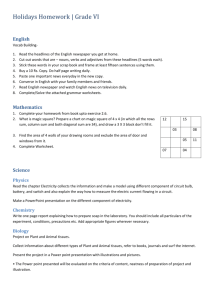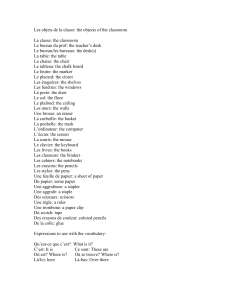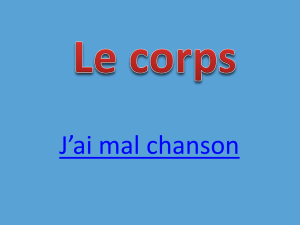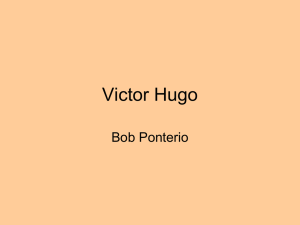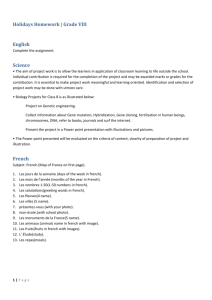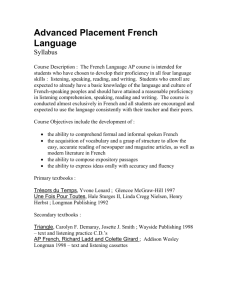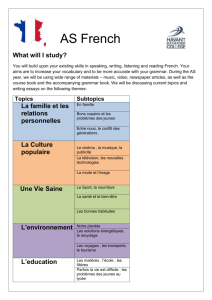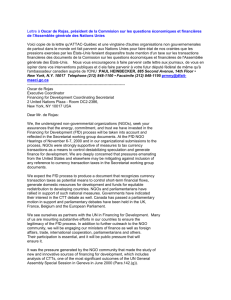Direct Object Pronouns (DOPs)
advertisement
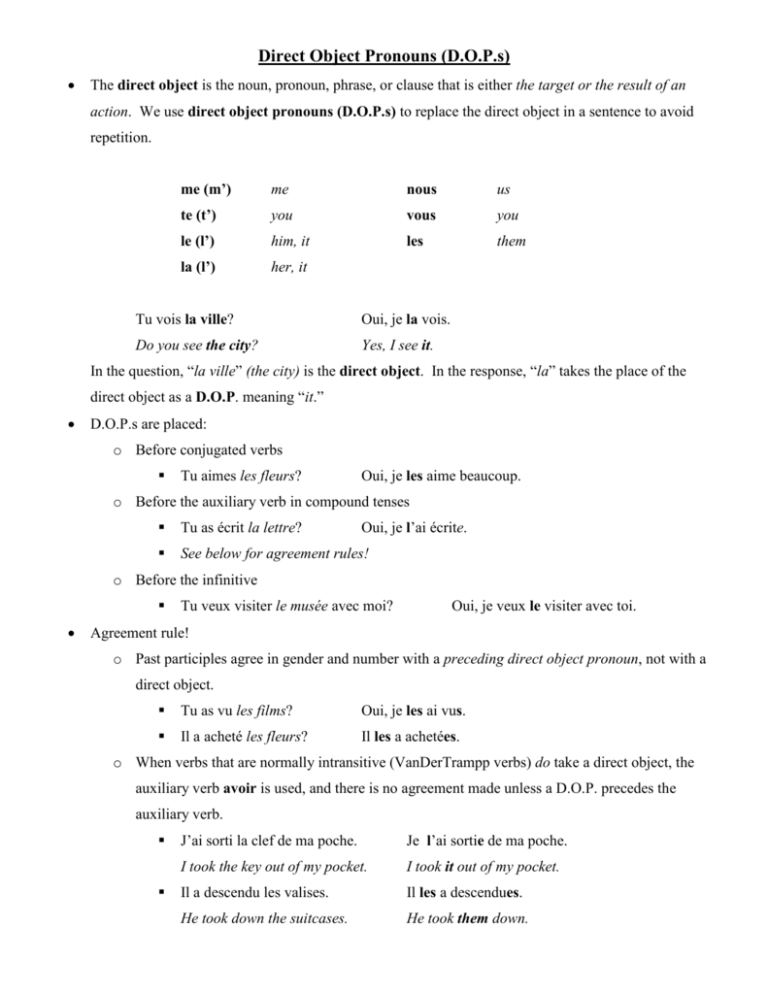
Direct Object Pronouns (D.O.P.s) The direct object is the noun, pronoun, phrase, or clause that is either the target or the result of an action. We use direct object pronouns (D.O.P.s) to replace the direct object in a sentence to avoid repetition. me (m’) me nous us te (t’) you vous you le (l’) him, it les them la (l’) her, it Tu vois la ville? Oui, je la vois. Do you see the city? Yes, I see it. In the question, “la ville” (the city) is the direct object. In the response, “la” takes the place of the direct object as a D.O.P. meaning “it.” D.O.P.s are placed: o Before conjugated verbs Tu aimes les fleurs? Oui, je les aime beaucoup. o Before the auxiliary verb in compound tenses Tu as écrit la lettre? See below for agreement rules! Oui, je l’ai écrite. o Before the infinitive Tu veux visiter le musée avec moi? Oui, je veux le visiter avec toi. Agreement rule! o Past participles agree in gender and number with a preceding direct object pronoun, not with a direct object. Tu as vu les films? Oui, je les ai vus. Il a acheté les fleurs? Il les a achetées. o When verbs that are normally intransitive (VanDerTrampp verbs) do take a direct object, the auxiliary verb avoir is used, and there is no agreement made unless a D.O.P. precedes the auxiliary verb. J’ai sorti la clef de ma poche. Je l’ai sortie de ma poche. I took the key out of my pocket. I took it out of my pocket. Il a descendu les valises. Il les a descendues. He took down the suitcases. He took them down. Indirect Object Pronouns (I.O.P.s) Indirect object pronouns (I.O.P.s) take the place of indirect object nouns. They refer to the person/animal that you (1) communicate with, (2) give something to, or (3) do something for. Indirect object nouns are usually preceded by the preposition à. me (m’) me nous us te (t’) you vous you lui him, her leur them Marie envoie une lettre à son amie. Marie lui envoie une lettre. Marie sends a letter to her friend. Marie sends her a letter. Like D.O.P.s, I.O.P.s are placed: o Before conjugated verbs Claire parle à sa mère. Claire lui parle. o Before the auxiliary verb in compound tenses Elle m’a dit bonjour. She said hello to me. Je ne lui ai pas répondu. I didn’t respond to her. Note: there is no agreement between the past participle and the I.O.P. o Before the infinitive Je vais lui écrire. I’m going to write to her. Je veux lui envoyer mon adresse. I want to send her my address. Commonly used verbs that are followed by an indirect object (à + noun) in French but a direct object in English include: obéir (to obey), répondre (to respond), and téléphoner (to call). Some common verbs that use an indirect object are: o demander de/à o poser une question à o dire à o raconter une histoire à o écrire à o parler de/à o plaire à o donner à o envoyer à o montrer à o prêter à o payer à
